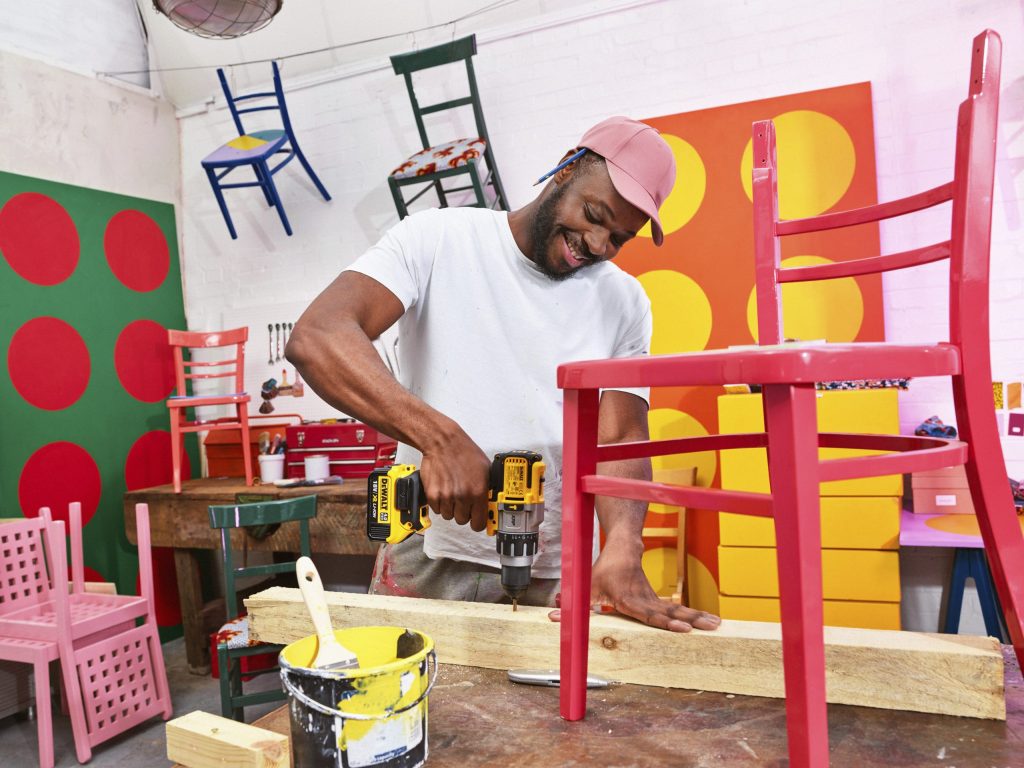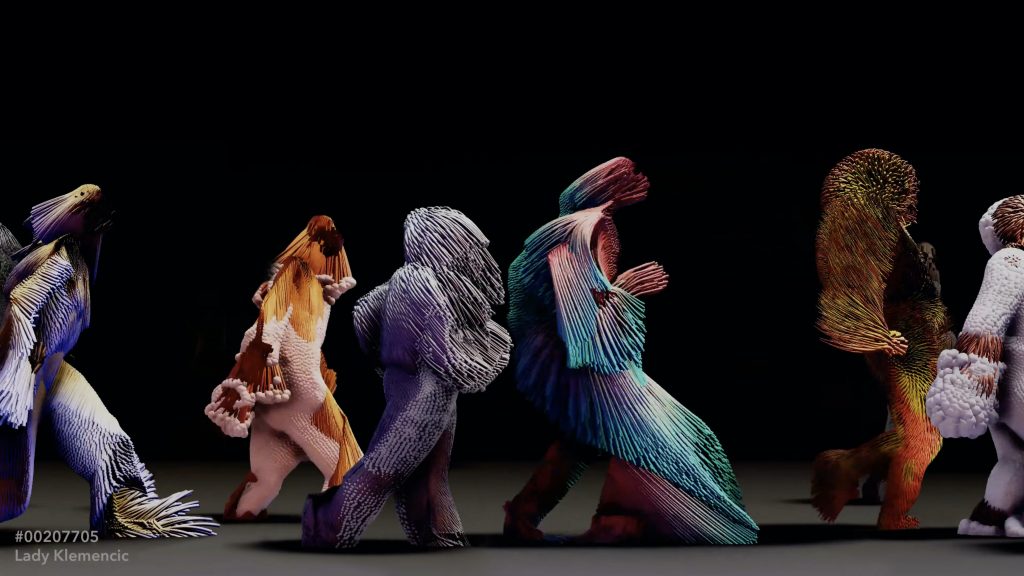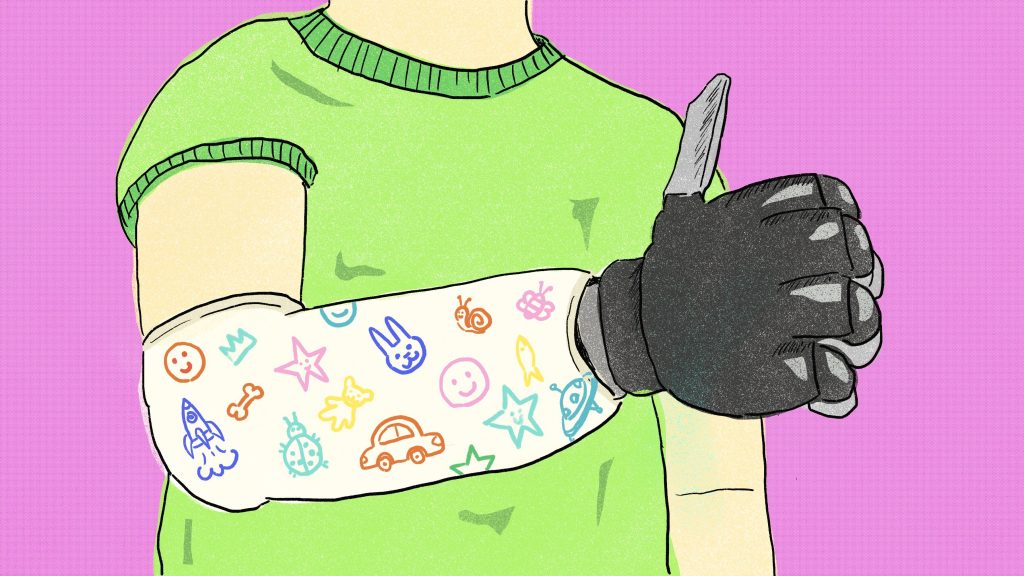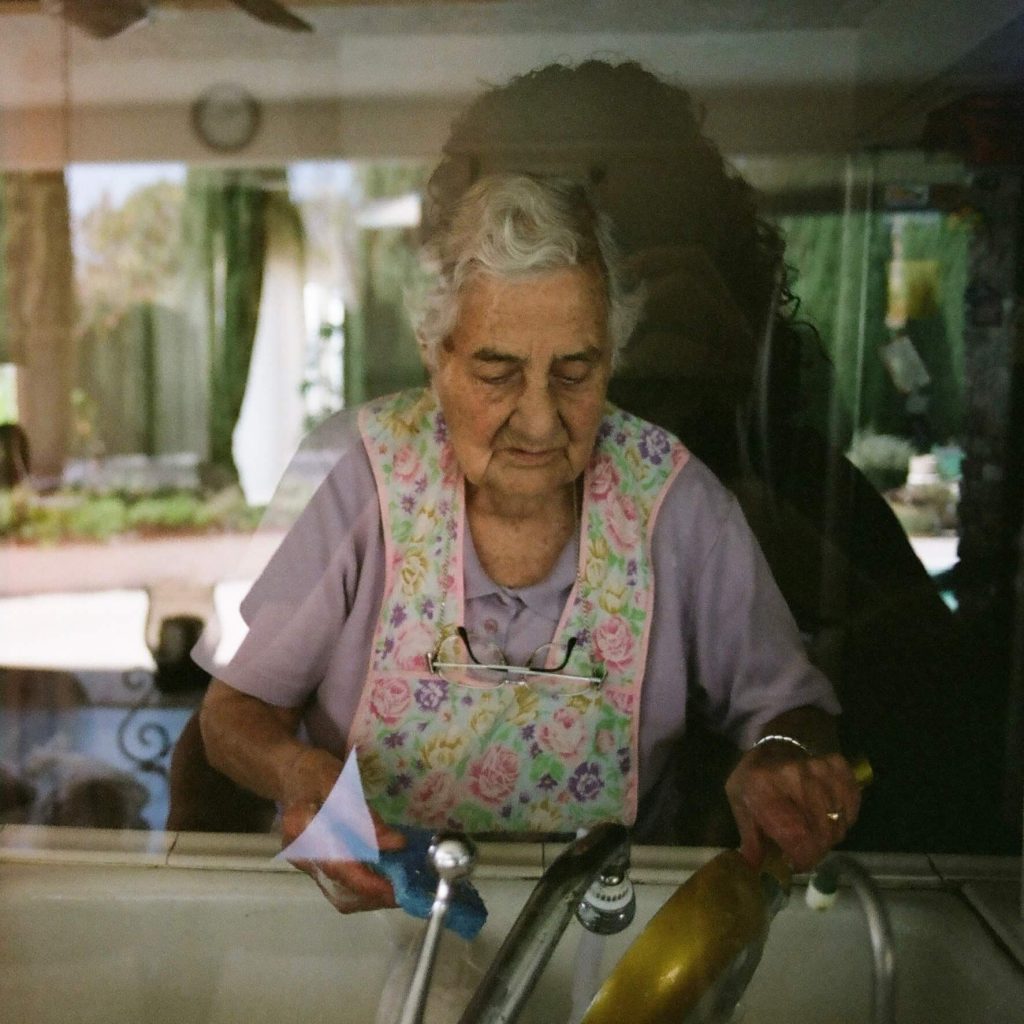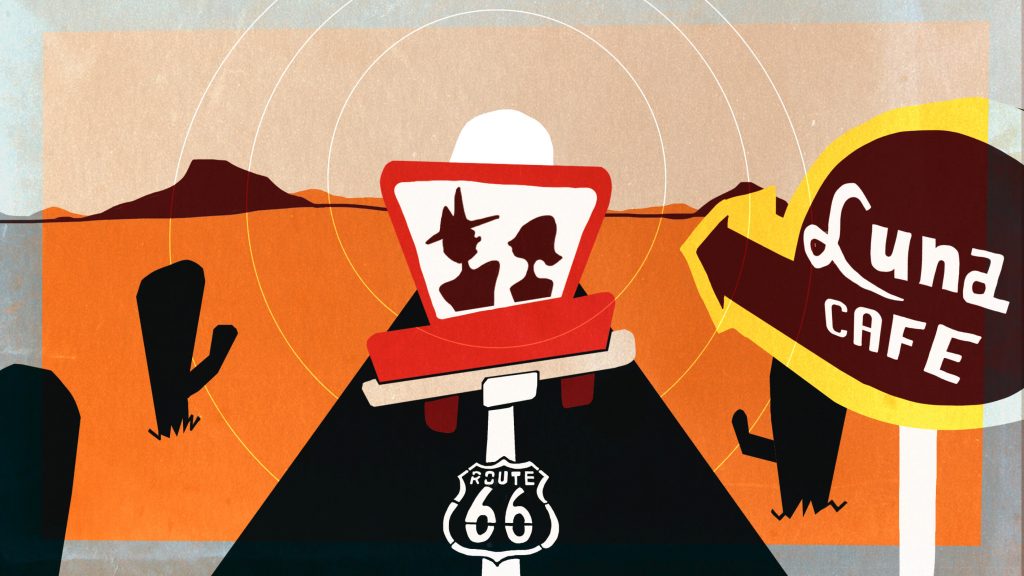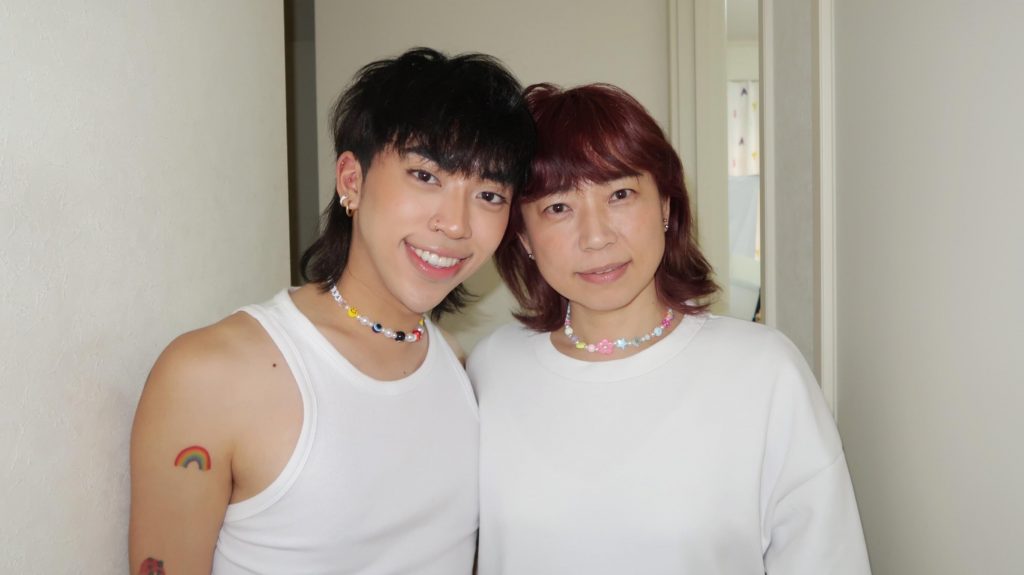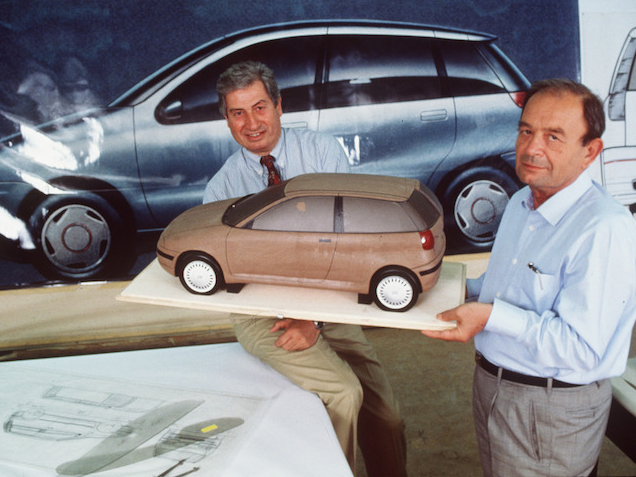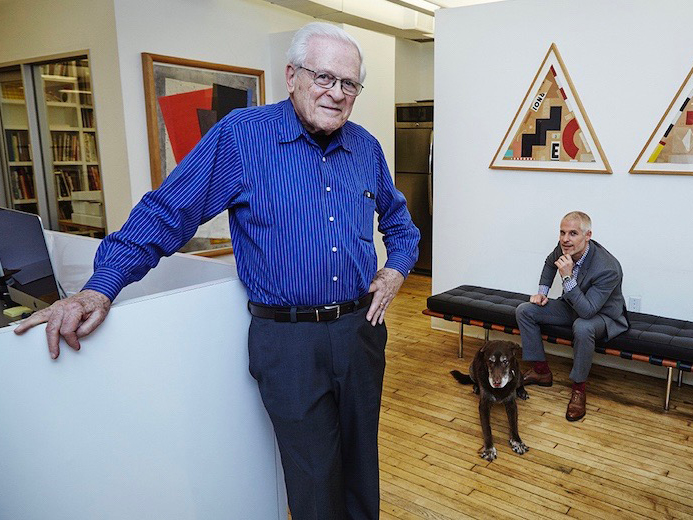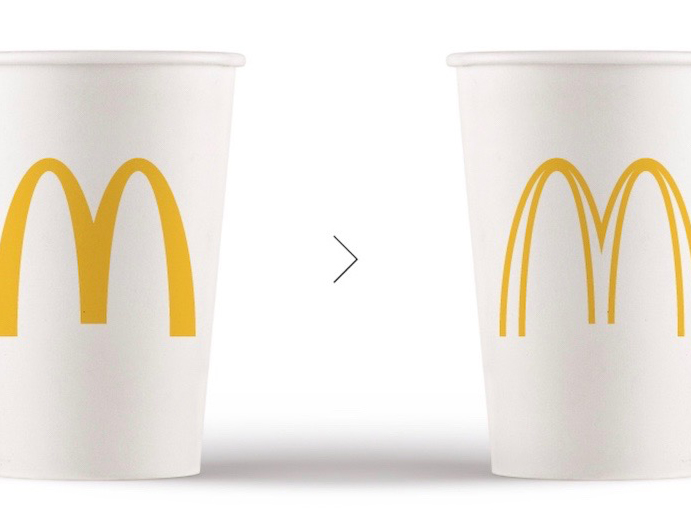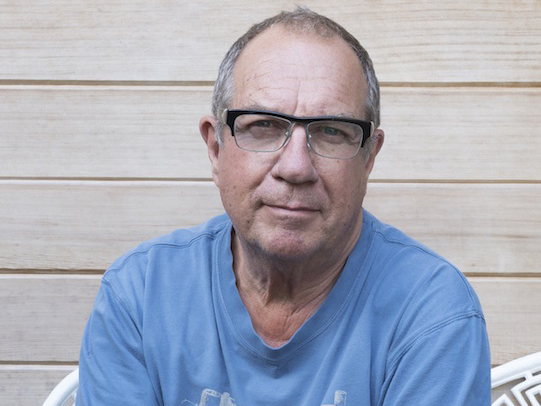今回紹介するのは、ニューヨークのホイットニー美術館にて本日終了する展覧会、「Rules, Codes, and Choreographies in Art」。1965年から現在(2018年)に至るまで、ビデオやコンピューターを用いた50年間の“メディアアート”の系譜が展示されている。
メディアアートとは、デジタル・テクノロジーを活用した芸術作品。となると、プロジェクションマッピングやスマホのアプリを利用したパフォーマンスか、と簡単に片付けてしまうかもしれない。しかしメディアアートとは、そもそも「メディアとは何なのか」「メディアと私たちの生活、そしてアートはどう結びついているか」について考える、とてもコンセプチュアルな現代美術のジャンルだ。今回の展示では特に“プログラミング”と現代美術の関係について考察することに焦点を当てている。
展示作品はすべて何らかのルールやアルゴリズムに基づいて指示(“プログラミング”)されている。たとえば制作に用いたアルゴリズムをそのまま平面作品に仕上げたり、バーチャルリアリティーと現実を融合したり…。言葉ではなんとも説明しづらいが、会場にはブラウン管のテレビとか、スマートフォンとか、私たちの日常生活で見慣れているデバイスが展示されている。それ自体が作品であることもあれば、作品を展示する(あるいは上映する)手段(“メディア”)として用いられていることもある。
展示室に一歩足を踏み出して最初に目に入るのは、ビデオ・アートの先駆者であり大御所でもある、ナム・ジュン・パイクの大規模なインスタレーションだ。天井まで届きそうなくらいに積み上げられたブラウン管のテレビが大きなスクリーンとして融合、分断しながら一見支離滅裂なカラフルなイメージを上映している。ちなみにこの作品の設置をおこなったテレビ/ビデオのテクニシャン(ナム・ジュン・パイクの当時からの友人)をヒープスでは取材したので、後日記事をたのしみにしてほしい。他にも、キャセイ・レアスやタミコ・ティール、ソル・ルウィットら、コンセプチュアルアーティストたちのインスタレーションが並ぶ。
メディアアート初期の作品から最新テクノロジーを利用した作品までバリエーションはさまざまだ。自動化がどんどん進む現代において、来場者はアートがどのようにテクノロジーに対応化してきたか、アルゴリズムをどう制作手法に取り込んできたかをたどっていく。メディアアートを通じてテクノロジーの発展の歴史、そしてテクノロジーが私たちの豊富な視覚文化に影響を与えてきたかを振り返ることができるのだ。

Josef Albers (1888-1976), White Line Square VI, 1966, from the portfolio White Line Squares (Series I). Lithographs: sheet, 20 11/16 x 20 11/16 in. (52.5 x 52.5 cm); image, 15 11/16 x 15 11/16 in. (39.9 x 39.9 cm). Whitney Museum of American Art, New York; gift of the artist 67.14.6. © 2018 The Josef and Anni Albers Foundation/Artists Rights Society (ARS), New York
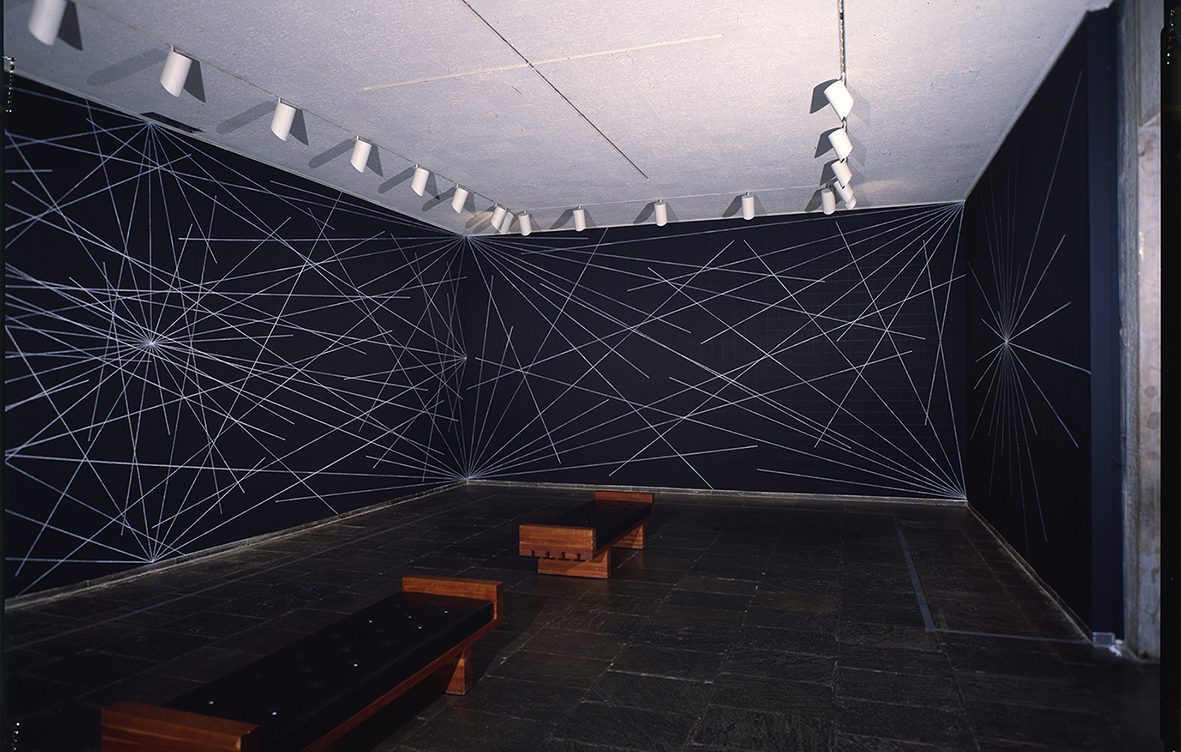
Sol LeWitt (1928-2007), Wall Drawing #289, 1976. Wax crayon, graphite pencil, and paint on four walls, dimensions variable. Whitney Museum of American Art, New York; purchase with funds from the Gilman Foundation, Inc. 78.1.1-4. © 2018 Sol LeWitt/Artists Rights Society (ARS), New York

John F. Simon Jr. (b. 1963), Color Panel v1.0, 1999. Software, altered Apple Macintosh Powerbook 280c, and acrylic (plastic), 13 1/2 x 10 1/2 x 3 in. (34.3 x 26.7 x 7.6 cm). Whitney Museum of American Art, New York; purchase with funds from the Painting and Sculpture Committee 99.88a-c. © 1999 John F. Simon Jr.

W. Bradford Paley (b.1958), Code Profiles, September 2002. Java applet. Commissioned by the Whitney Museum of American Art for its artport website AP.2002.11
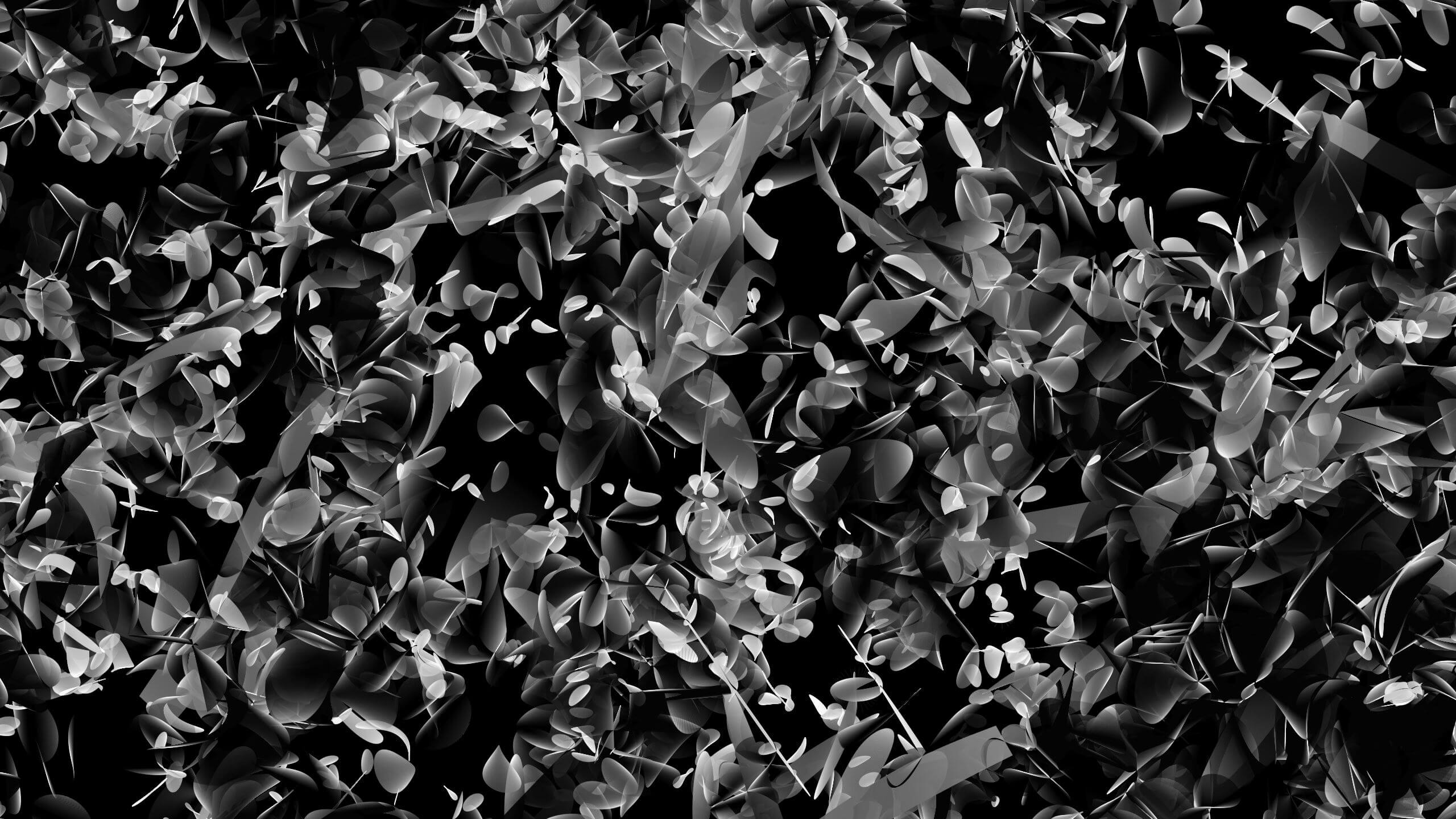
Casey Reas (b.1972), {Software} Structures #003 B, August 2004/2016. Java, Adobe Flash Player. Commissioned by the Whitney Museum of American Art for its artport website AP.2004.5
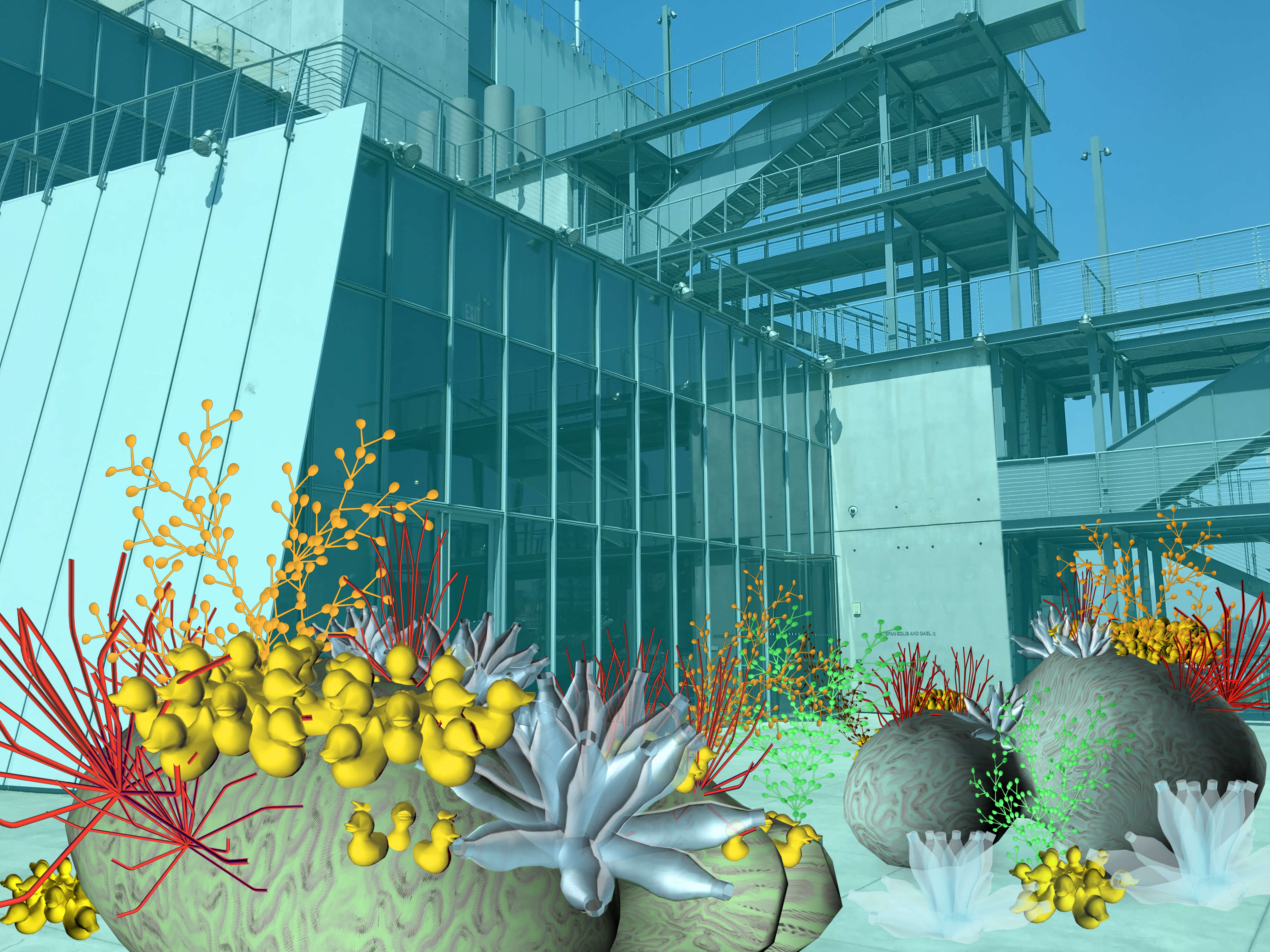
Tamiko Thiel (b. 1957) (with /p), Unexpected Growth, 2018. Augmented reality installation, healthy phase. Commissioned by the Whitney Museum of American Art

WMAA_PROGRAMMED_02
Installation view of Programmed: Rules, Codes, and Choreographies in Art, 1965-2018 (Whitney Museum of American Art, New York, September 28, 2018-April 14, 2019). From left to right, top to bottom: Josef Albers, Homage to the Square V, 1967; Josef Albers, Homage to the Square IX, 1967; Josef Albers, Homage to the Square XII, 1967; Josef Albers, Homage to the Square X, 1967; Josef Albers, Variant V, 1966; Josef Albers, Variant VI, 1966; Josef Albers, Variant X, 1966; Josef Albers, Variant IV, 1966; Josef Albers, Variant II, 1966; Josef Albers, Variant VII, 1966; John F. Simon Jr., Color Panel v1.0, 1999. Photograph by Ron Amstutz
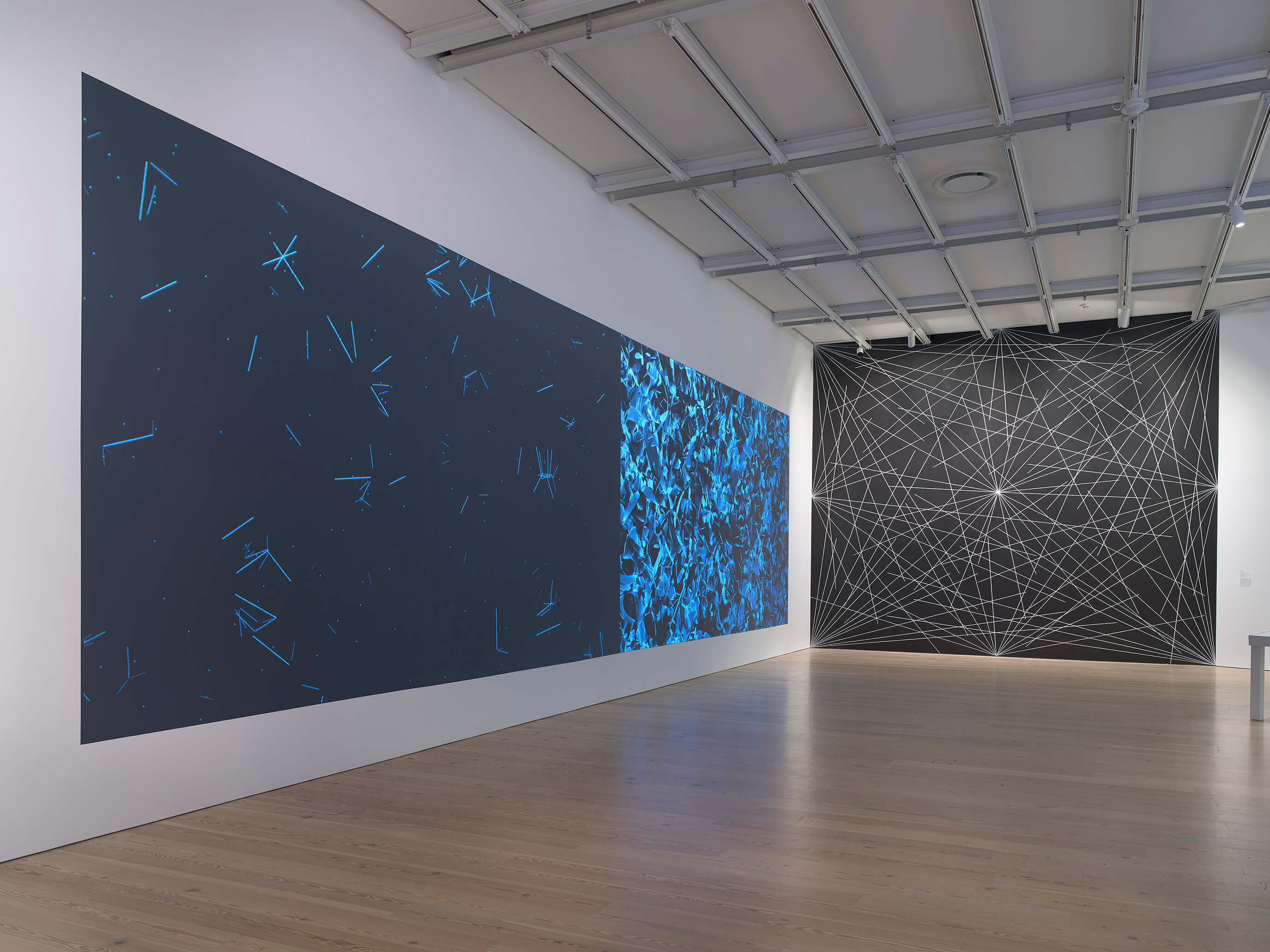
WMAA_PROGRAMMED_04
Installation view of Programmed: Rules, Codes, and Choreographies in Art, 1965-2018 (Whitney Museum of American Art, New York, September 28, 2018-April 14, 2019). From left to right: Casey Reas, {Software} Structure #003 A, 2004 and 2016; Casey Reas, {Software} Structure #003 B, 2004 and 2016; Sol LeWitt, 4th Wall: 24 lines from the center, 12 lines from the midpoint of each of the sides, 12 lines from each corner, 1976. Photograph by Ron Amstutz
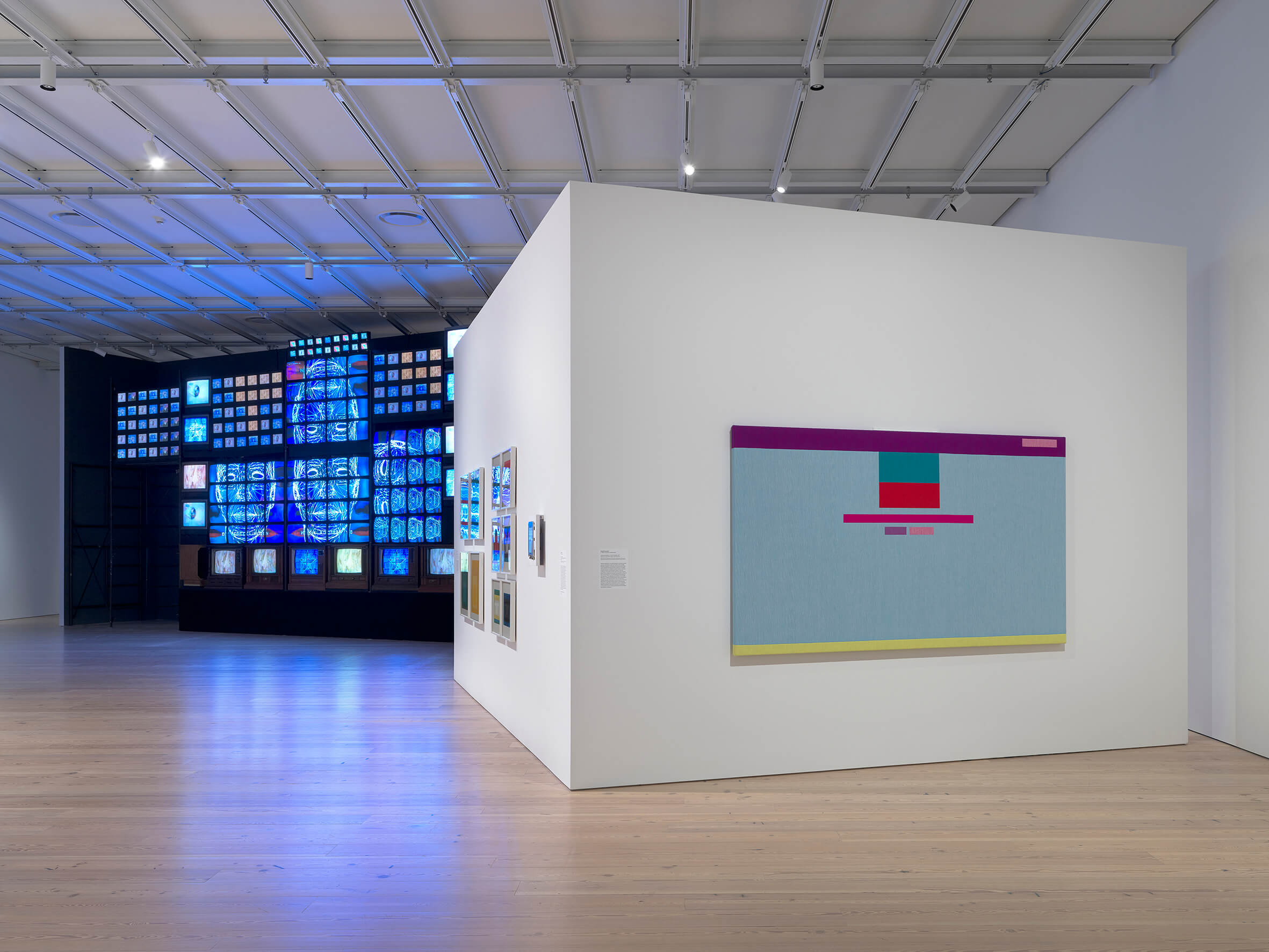
WMAA_PROGRAMMED_10
Installation view of Programmed: Rules, Codes, and Choreographies in Art, 1965-2018 (Whitney Museum of American Art, New York, September 28, 2018-April 14, 2019). From left to right, top to bottom: Nam June Paik, Fin de Siècle II, 1989 (partially restored, 2018); Josef Albers, Homage to the Square V, 1967; Josef Albers, Homage to the Square IX, 1967; Josef Albers, Homage to the Square XII, 1967; Josef Albers, Homage to the Square X, 1967; Josef Albers, Variant V, 1966; Josef Albers, Variant VI, 1966; Josef Albers, Variant X, 1966; Josef Albers, Variant IV, 1966; Josef Albers, Variant II, 1966; Josef Albers, Variant VII, 1966; John F. Simon Jr., Color Panel v1.0, 1999; Rafaël Rozendaal, Abstract Browsing 17 03 05 (Google), 2017. Photograph by Ron Amstutz

WMAA_PROGRAMMED_12
Installation view of Programmed: Rules, Codes, and Choreographies in Art, 1965-2018 (Whitney Museum of American Art, New York, September 28, 2018-April 14, 2019). From left to right, top to bottom: Charles Csuri, Sine Curve Man, 1967; Joan Truckenbrod, Curvilinear Perspective, 1979; Joan Truckenbrod, Coded Algorithmic Drawing (#9), 1975; Joan Truckenbrod, Coded Algorithmic Drawing (#45), 1975. Photograph by Ron Amstutz
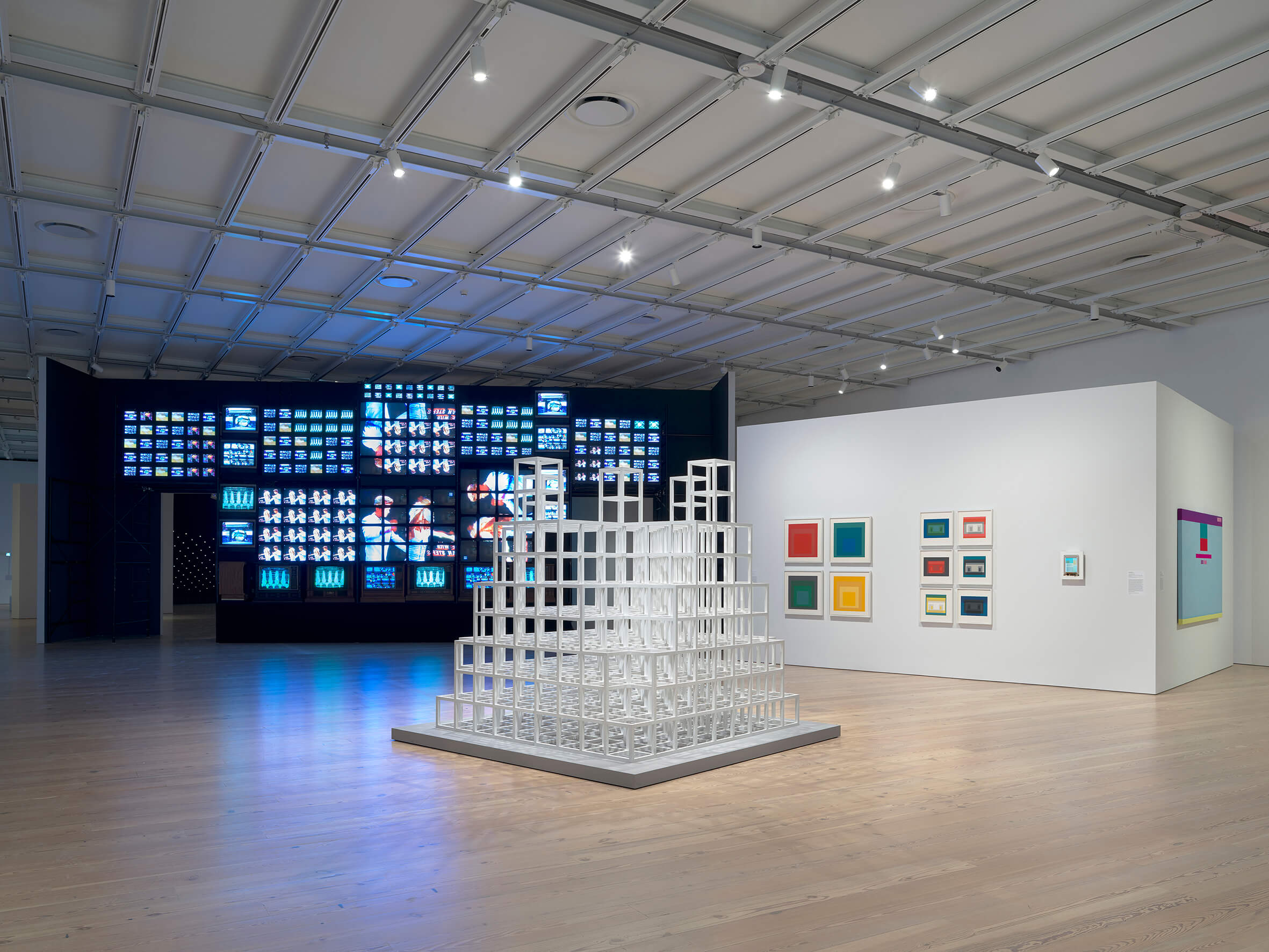
WMAA_PROGRAMMED_15
Installation view of Programmed: Rules, Codes, and Choreographies in Art, 1965-2018 (Whitney Museum of American Art, New York, September 28, 2018-April 14, 2019). From left to right: Nam June Paik, Fin de Siècle II, 1989 (partially restored, 2018); Sol LeWitt, Five Towers, 1986; Josef Albers, Homage to the Square V, 1967; Josef Albers, Homage to the Square IX, 1967; Josef Albers, Homage to the Square XII, 1967; Josef Albers, Homage to the Square X, 1967; Josef Albers, Variant V, 1966; Josef Albers, Variant VI, 1966; Josef Albers, Variant X, 1966; Josef Albers, Variant IV, 1966; Josef Albers, Variant II, 1966; Josef Albers, Variant VII, 1966; John F. Simon Jr., Color Panel v1.0, 1999; Rafaël Rozendaal, Abstract Browsing 17 03 05 (Google), 2017. Photograph by Ron Amstutz
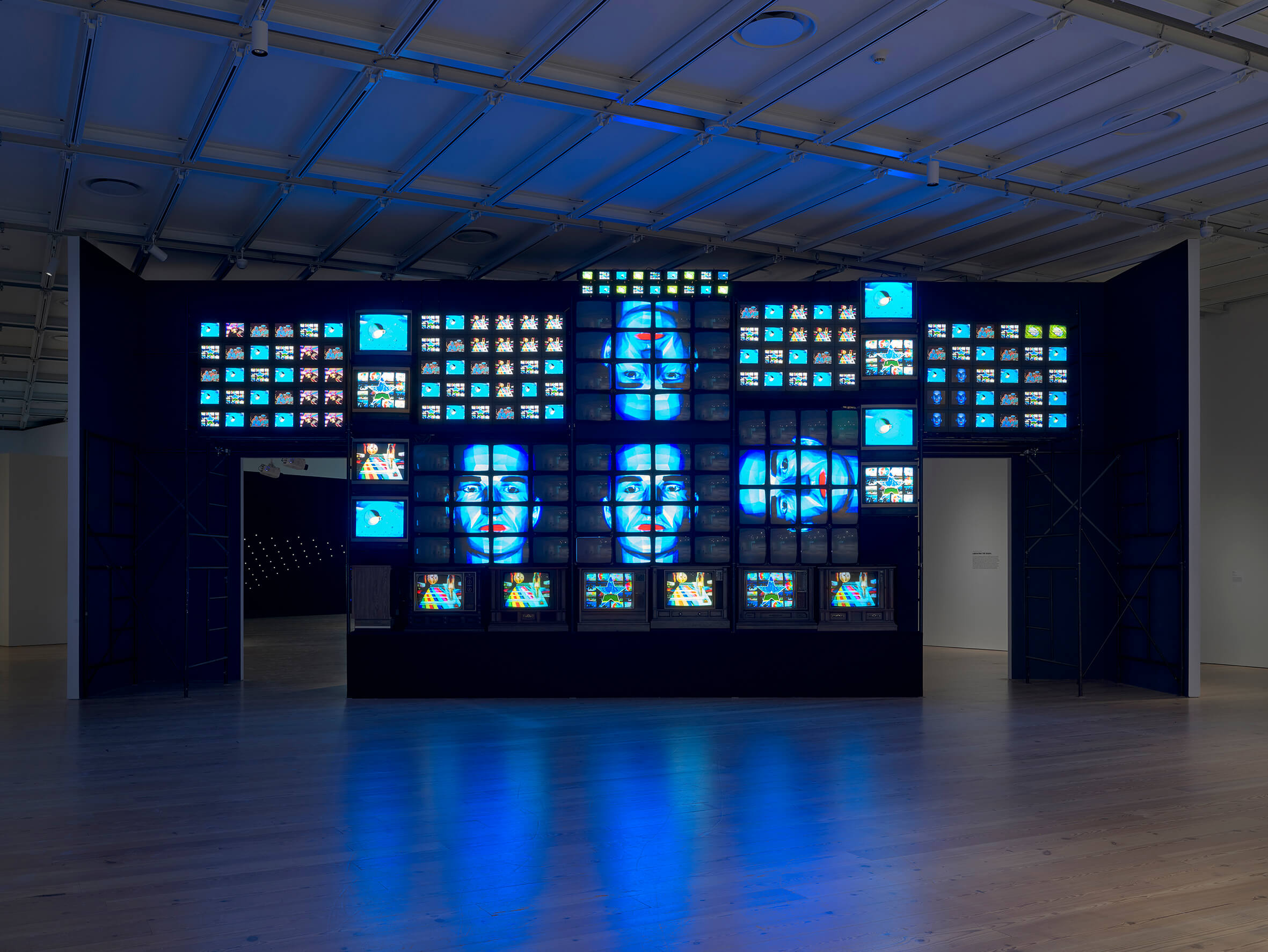
WMAA_PROGRAMMED_16
Nam June Paik (1932-2006), Fin de Siècle II, 1989 (partially restored, 2018) (installation view, Programmed: Rules, Codes, and Choreographies in Art, 1965-2018, Whitney Museum of American Art, New York, September 28, 2018-April 14, 2019). Seven-channel video installation, 207 televisions, sound, 168 × 480 × 60 in. (426.7 × 1219.2 × 152.4 cm). Whitney Museum of American Art, New York; gift of Laila and Thurston Twigg-Smith 93.139. © Nam June Paik Estate. Photograph by Ron Amstutz
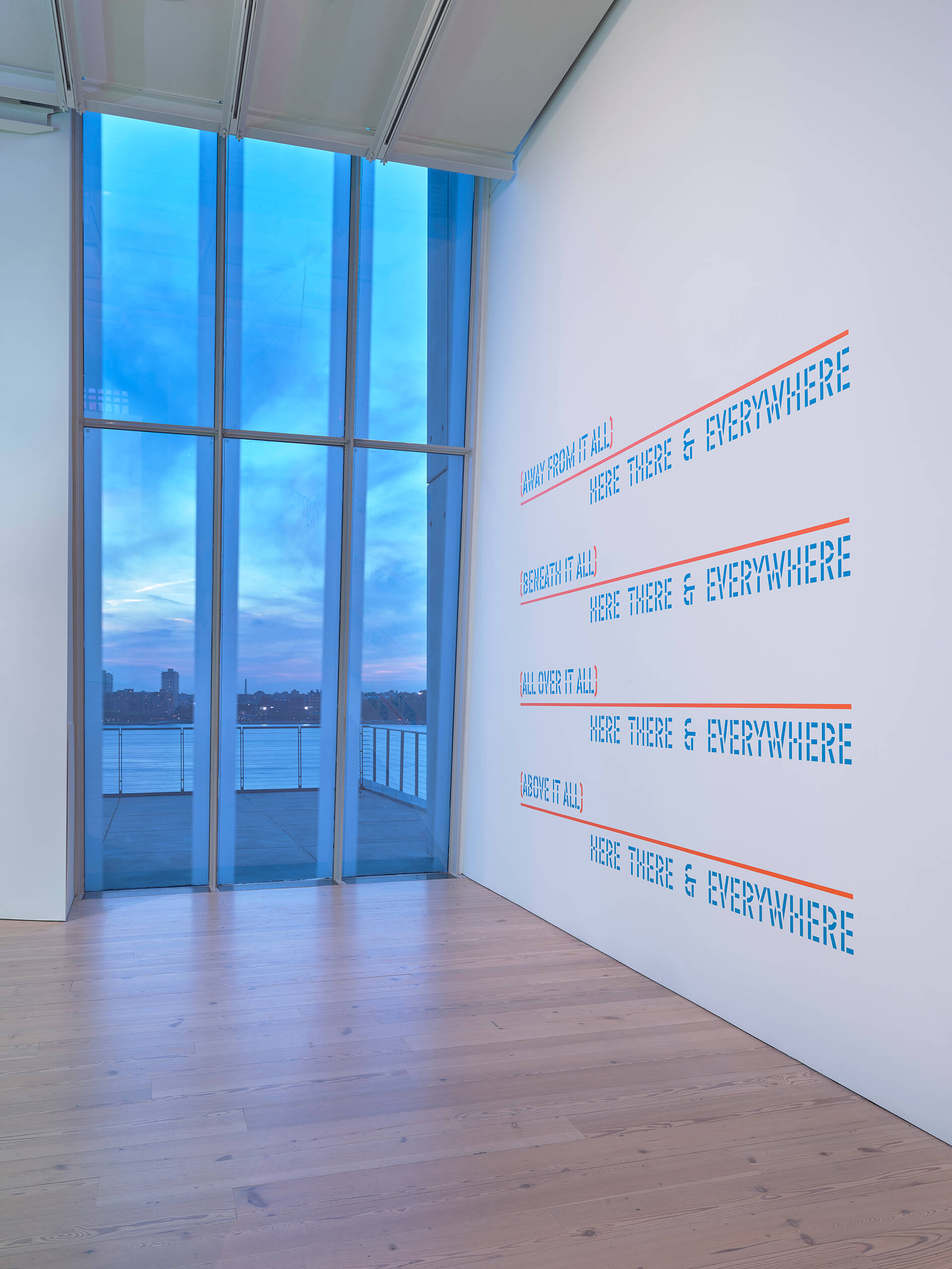
WMAA_PROGRAMMED_28
Lawrence Weiner (b. 1942), HERE THERE & EVERYWHERE, 1989 (installation view, Programmed: Rules, Codes, and Choreographies in Art, 1965-2018, Whitney Museum of American Art, New York, September 28, 2018-April 14, 2019). Language + the materials referred to, dimensions variable. Whitney Museum of American Art, New York; purchase with funds from the Contemporary Painting and Sculpture Committee 94.136. © Lawrence Weiner/Artists Rights Society (ARS), New York. Photograph by Ron Amstutz


